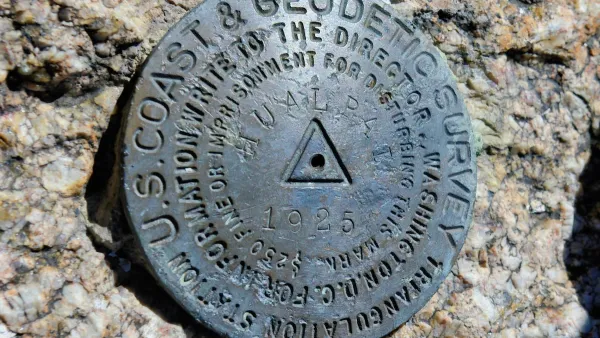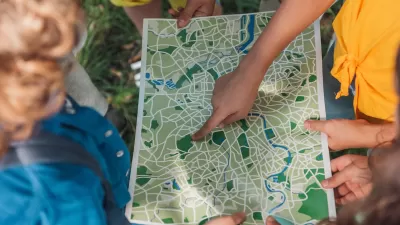Tim Maly analyses a stunning high-resolution map of America’s forests for its lessons on the subtle choices that go into good visual information design for multiple audiences.
NASA's map, built from 265 million segments and accurate to within 30 meters, is intended to be a tool for understanding exactly how much carbon our trees can absorb. Based on data gathered by the Woods Hole Research Center's (WHRC) National Biomass and Carbon Dataset (NBCD), the map has been developed to a scale "which means that forest managers and researchers can track the disruption caused by things as small as a parking lot or a large building," writes Maly.
In developing the map however, Robert Simmon, art director of NASA's Earth Observatory, who published the map, wanted it to be accessible for non-experts as well. That meant paying close attention to how certain colors are interpreted and how patterns and relationships are conveyed.
According to Maly, "Good information design for the public is about clarity and impact. Simmon says that his primary goal as an information designer is to create 'almost an emotional reaction with people.' He wants to make that first 'getting what it is' as easy as possible while retaining as much information as possible in the display so the more you look at it, the more you see. 'It's a classical design sense of creating a hierarchy of information.'"
FULL STORY: NASA Creates Insanely High-Res Map Of America’s Trees, And Offers A Lesson In Information Design

Maui's Vacation Rental Debate Turns Ugly
Verbal attacks, misinformation campaigns and fistfights plague a high-stakes debate to convert thousands of vacation rentals into long-term housing.

Planetizen Federal Action Tracker
A weekly monitor of how Trump’s orders and actions are impacting planners and planning in America.

In Urban Planning, AI Prompting Could be the New Design Thinking
Creativity has long been key to great urban design. What if we see AI as our new creative partner?

King County Supportive Housing Program Offers Hope for Unhoused Residents
The county is taking a ‘Housing First’ approach that prioritizes getting people into housing, then offering wraparound supportive services.

Researchers Use AI to Get Clearer Picture of US Housing
Analysts are using artificial intelligence to supercharge their research by allowing them to comb through data faster. Though these AI tools can be error prone, they save time and housing researchers are optimistic about the future.

Making Shared Micromobility More Inclusive
Cities and shared mobility system operators can do more to include people with disabilities in planning and operations, per a new report.
Urban Design for Planners 1: Software Tools
This six-course series explores essential urban design concepts using open source software and equips planners with the tools they need to participate fully in the urban design process.
Planning for Universal Design
Learn the tools for implementing Universal Design in planning regulations.
planning NEXT
Appalachian Highlands Housing Partners
Mpact (founded as Rail~Volution)
City of Camden Redevelopment Agency
City of Astoria
City of Portland
City of Laramie





























